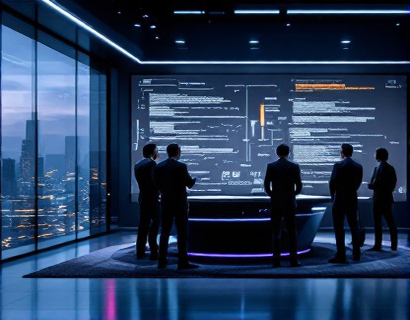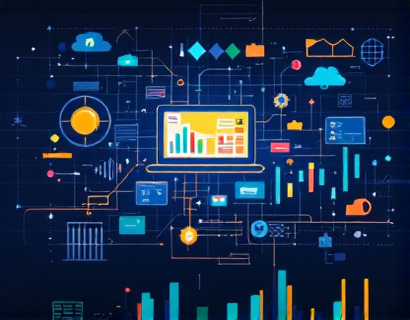Unlocking the Cosmos: Interactive Software for Astronomy Education and Exploration
In an era where technology and education intersect, the field of astronomy has witnessed a revolutionary transformation. Interactive software has emerged as a powerful tool, making the vast and intricate universe accessible to a broader audience. This article delves into the capabilities and benefits of such software, designed to transform astronomy education and exploration. For astronomy enthusiasts, educators, students, and space exploration hobbyists, these tools bridge the gap between complex celestial concepts and engaging, hands-on learning experiences.
The primary goal of this innovative software is to foster a deeper understanding of the universe, galaxy, and celestial objects. By leveraging advanced graphics, real-time data, and interactive simulations, users can embark on an extraordinary cosmic journey from the comfort of their homes. The software is meticulously crafted to cater to diverse learning styles and levels of expertise, ensuring that everyone from beginners to seasoned astronomers can find value in its resources.
Immersive Learning Experiences
One of the most significant advantages of interactive astronomy software is its ability to create immersive learning environments. Traditional textbooks and lectures often struggle to convey the dynamic and three-dimensional nature of the cosmos. Interactive software, however, uses 3D models and virtual reality (VR) to simulate celestial phenomena, allowing users to explore planets, stars, galaxies, and other cosmic structures in a highly engaging manner.
For instance, users can virtually travel through the solar system, observing the unique features of each planet, from the rings of Saturn to the Great Red Spot on Jupiter. The software can also simulate astronomical events such as solar eclipses, meteor showers, and planetary alignments, providing a firsthand experience of these rare occurrences. This immersive approach not only enhances understanding but also ignites a sense of wonder and curiosity about the universe.
Engaging Resources and Comprehensive Tools
Beyond immersive experiences, the software offers a wealth of engaging resources and comprehensive tools. These include interactive star maps, detailed planetary data sheets, and comprehensive guides on various astronomical topics. Users can access real-time data from telescopes and space probes, enabling them to stay updated with the latest discoveries and research in the field.
For educators, the software provides lesson plans, quizzes, and interactive activities that align with educational standards. These resources are designed to complement classroom teaching, making astronomy more accessible and enjoyable for students. The software also supports collaborative learning, allowing students to work together on projects and share their findings in a virtual classroom setting.
Enhancing Knowledge and Fostering Curiosity
The ultimate aim of interactive astronomy software is to enhance knowledge and fuel curiosity. By breaking down complex concepts into digestible and interactive modules, the software makes learning astronomy an enjoyable and rewarding experience. Users can explore topics such as the life cycle of stars, the formation of galaxies, and the search for extraterrestrial life, all through interactive simulations and visualizations.
For astronomy enthusiasts, the software serves as a personal observatory, offering tools to track celestial objects, plan observations, and record findings. It can also inspire hobbyists to take their interest further, encouraging them to engage in citizen science projects and contribute to real astronomical research. This democratization of access to astronomical data and tools empowers a wider audience to participate in the scientific community.
Interactive Simulations and Real-Time Data
Interactive simulations are a cornerstone of this software, providing a hands-on approach to learning astronomy. Users can manipulate variables to observe the effects on celestial phenomena, such as the orbit of planets, the expansion of the universe, and the behavior of black holes. These simulations are based on real scientific models and data, ensuring accuracy and educational value.
Additionally, the integration of real-time data from space agencies and observatories adds a layer of authenticity and relevance. Users can access live feeds from telescopes, satellite imagery, and recent discoveries, making the learning experience current and dynamic. This feature is particularly valuable for educators, as it allows them to bring the latest scientific findings into the classroom, keeping the content fresh and engaging.
User-Friendly Interface and Accessibility
The software is designed with user-friendliness in mind, ensuring that it is accessible to a wide range of users, regardless of their technical expertise. The interface is intuitive and easy to navigate, with clear instructions and guided tours for new users. This accessibility is crucial in making astronomy education inclusive, allowing individuals from diverse backgrounds to explore the cosmos.
For those with visual impairments, the software includes features such as text-to-speech, high-contrast modes, and scalable text options. These accommodations ensure that everyone can benefit from the educational resources and interactive experiences offered by the software.
Community and Collaboration
Another significant aspect of the software is its focus on community and collaboration. Users can join forums, participate in discussions, and share their projects with a global community of astronomy enthusiasts. This social feature fosters a sense of belonging and encourages users to learn from one another, share insights, and collaborate on research projects.
For educators, the community aspect provides a platform to exchange teaching strategies, resources, and feedback. This collaborative environment not only enhances the learning experience but also supports the professional development of educators in the field of astronomy.
Future Prospects and Innovations
As technology continues to advance, the potential for interactive astronomy software is vast. Future developments may include more sophisticated AI-driven personalized learning paths, augmented reality (AR) experiences that overlay celestial information onto the real world, and integration with emerging space technologies such as quantum computing and deep space communication.
These innovations will further enhance the educational value and engagement of the software, making astronomy more accessible and exciting than ever before. The goal remains to continue breaking down barriers and inspiring a new generation of astronomers, scientists, and space explorers.
In conclusion, interactive software for astronomy education and exploration represents a significant leap forward in making the universe accessible and understandable. By combining immersive experiences, engaging resources, and comprehensive tools, this software empowers users to embark on a cosmic journey of discovery and learning. Whether you are an astronomy enthusiast, an educator, or a student, the software offers a unique and enriching way to explore the wonders of the cosmos.










































